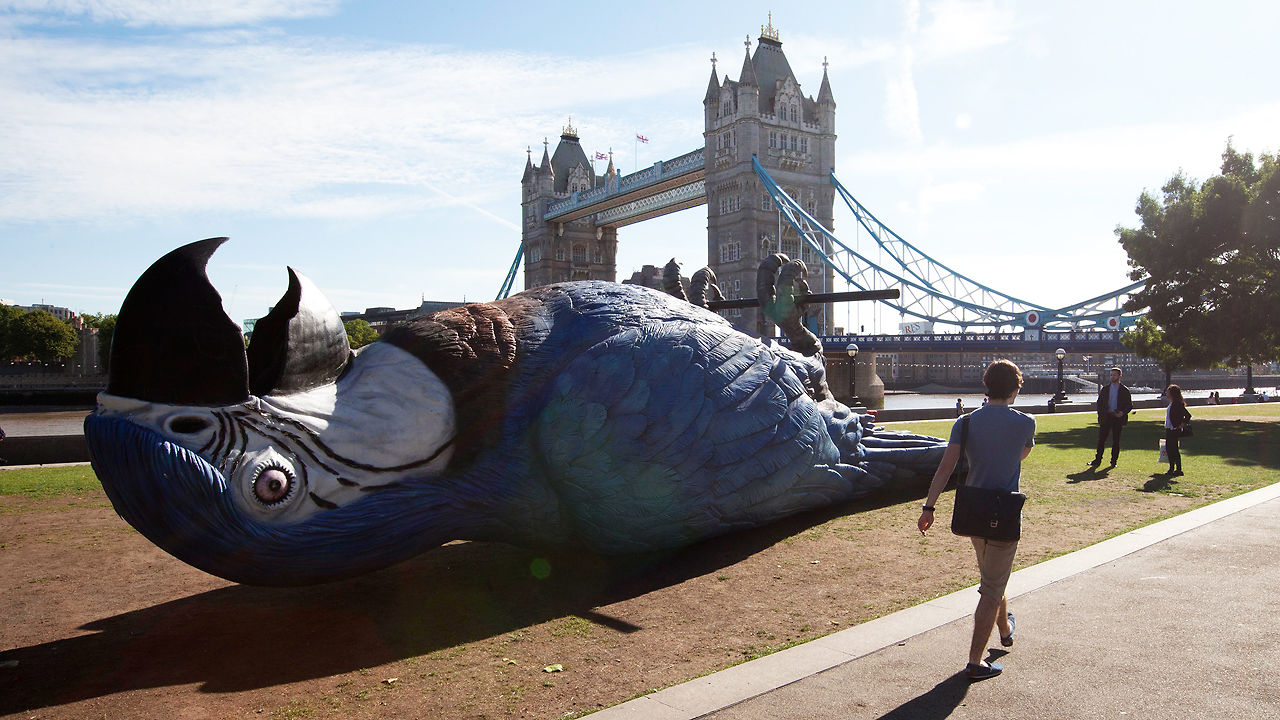I give up. It’s impossible to prioritize or organize today’s beaver news into one well-rounded serving. I’m just going to have to lump them together like a very disorganized (but tasty) potluck. Enjoy. Of course I’ll start with what’s most important:
City installs pond system to offset beaver activity

So as part of the city’s Beaver Management Program, two pond leveling devices were installed on July 9 in two beaver dams located near the Augustana Campus by 48th St.
Two 20 feet long High Density Polyethylene, or HDPE, pipes were installed through the dams to allow water to flow through the ponds. The pipes are placed at a level that will allow water to balance out between the ponds. Each end of the pipe has a cage made from hog fencing to ensure blockage will not occur.
The devices are the first of their kind to be installed in Camrose.
“Essentially, it is a piping system that acts like a syphon,” said Glynnis Hood, associate professor in environmental science at the University of Alberta – Augustana Campus, who is spearheading the project.
“Anytime the water gets above the level of where the pipe is placed in the dam, the syphon system starts to work and keeps the water at a consistent level rather than having the pond flood above its banks,” Hood said.
Hurray for Glynnis and her merry band of [burly] students! Hurray for Camrose and flow devices in Alberta! And Hurray for beavers who will stabilize that stream and improve conditions for fish and birds.
Hood added that her research shows the leveling system will result in significant time and monetary savings because there is less need for ongoing maintenance compared to traditional methods such as a dam removal or beaver trapping.
Each pond levelling system cost approximately $600 in materials and about $200 for labor.
Hood said, “It seems like a large initial cost but what we’ve found is that very low maintenance is required thereafter and it makes up for the rental of a backhoe which is about $200 to $300 an hour, not to mention the staffing that goes into it.”
The new pond leveling system will also allow the ecosystem to thrive as there will be fewer interruptions to the area in the form of dam removals.
Hood said, “The beavers can stay. They tend to just pack more material on top of the pipe and that actually helps our installation because it protects the pipe even more. These devices are designed to keep the pond intact, albeit at a lower level than beavers probably want them to be.”
Dr. Hood is one of the brightest stars in the beaver firmament. Every time I read about her successful persuasions with science I get a glorious feeling that one day we might actually cross the finish line. In the meantime, we still have some laps to do in our Martinez relay. Audubon enjoyed a very successful field trip last night and we have a festival to plan.
 The brochure is finished (Thanks Amelia!) and the charms are done (Thanks Mike!). I had a great interview with the CC Times tuesday and we are in Patch today.
The brochure is finished (Thanks Amelia!) and the charms are done (Thanks Mike!). I had a great interview with the CC Times tuesday and we are in Patch today.
Beaver Festival VII Coming Soon to Martinez
The Seventh Annual Beaver Festival in historic downtown Martinez is set for August 2, from 11 a.m. to 4 p.m. in Beaver Park, at the corner of Marina Vista and Castro Streets.
Bring the family to this free, unique Bay Area landmark event.
The Beaver Festival features live music, wildlife exhibits from seven counties, children’s activities and beaver tours.
Learn how and why every city should co-exist with beavers. The first 100 children earn a Wildbryde charm necklace.
Everyone will find something special at this one-of-a-kind celebration of local nature and its most famous grassroots civic success story! To learn more about Worth A Dam (MartinezBeavers.org), follow this link.
Thanks Patch! Oh and just in case you wondered about DEFRA, England is still woefully stupid, but their feet are getting closer to the fire. The story was on British TV last night and in Indian newspapers this morning.
But, don’t worry, the English aren’t always foolish. This, for example, was a brilliant decision.
 London Celebrates The Monty Python Reunion By Putting A 50-Foot Dead Parrot In Potters Field Park
London Celebrates The Monty Python Reunion By Putting A 50-Foot Dead Parrot In Potters Field Park
Go read the article, it’s that fun.
Oh and today just needs this, I can tell.

